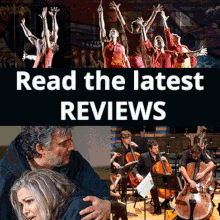Ever since Cavalleria rusticana and Pagliacci were first shackled together as verismo twins in 1893, operatic double bills have fascinated audiences. The pairing of shorter, one-act operas can sometimes be inventive, moving against the obvious choices. Take the New National Theatre, Tokyo, which has, under Kazushi Ono’s artistic directorship, made some unusual couplings in recent seasons: Le rossignol with Iolanta; and Zemlinsky’s Eine florentinische Tragödie with Florence-based comedy Gianni Schicchi. The latter was written as the final part of Puccini’s Il trittico and it’s a new production of another opera in this triptych that opens the 2023–24 season in an unusual double bill.
Suor Angelica, traditionally the middle panel of Trittico, is paired with Ravel’s L’Enfant et les sortilèges in a production by Japanese director Jun Aguni, who also directed that 2019 Florentine double bill. Both operas are linked by the theme of motherhood. Angelica tells the story of a nun, sent to the convent after having given birth to an illegitimate son, and who discovers, during the course of the opera, that he has died. She takes poison and, in a miraculous denouement that not all directors observe, sees a vision of her child as she dies.
Ravel’s opera is less tragic. A naughty boy refuses to do his homework and, when scolded by his mother, trashes his bedroom. In an alarming turn of events, objects in the room come to life – china cup and teapot, armchair, the princess from his storybook, fire leaping from the fireplace – and teach him a valuable lesson. It’s only when the Child tends a squirrel’s injured paw (that he had caused) that he is redeemed, reunited with his mother in a heartbreaking, sobbed “Maman!” It will be fascinating to see how Aguni links these two operas stylistically. Ryusuke Numajiri conducts and the casts are led by Chiara Isotton (Angelica) and French soprano Chloé Briot (L’Enfant).
The NNTT certainly starts the season in bold fashion. The Angelica/L’Enfant double bill is followed in November by another new production, Verdi’s Simon Boccanegra, staged by Pierre Audi and conducted by Kazushi Ono. The designer is Anish Kapoor, who worked on Audi’s Dutch National Parsifal. This Boccanegra will be the first outing for a co-production that is shared with Finnish National Opera and Madrid’s Teatro Real. It is the first time the NNTT has produced this opera, which has something of a reputation as a dark horse in the Verdi canon.
It is the tale of a pirate caught up in political wranglings in 14th-century Genoa and who is elected Doge against his will. A 25-year gap after the Prologue, a long-lost daughter and a vengeful grandfather make for a convoluted plot, but the opera is deeply touching. An excellent, mostly Italian cast has been assembled, led by Roberto Frontali as the reluctant Doge and Riccardo Zanellato as his arch-enemy, Jacopo Fiesco.
The remainder of the opera season consists of cherished revivals, the most anticipated being Sir David McVicar’s take on Wagner’s Tristan und Isolde which hasn’t been staged by the house since its 2010–11 season premiere. It makes for a spectacular production, particularly in Robert Jones’ epic set design, which features an actual ship. Again, Kazushi Ono conducts and the cast sees a return to the NNTT of Heldentenor Torsten Kerl, while Eva-Maria Westbroek makes her house debut as Isolde.
Another production eagerly awaited is Eugene Onegin, in a staging by Dmitry Bertman, based on Konstantin Stanislavsky’s famed 1922 Bolshoi production. It played with great success at the NNTT in October 2019 and is back in Tokyo next January with a cast led by Ukrainian baritone Yuriy Yurchuk the title role and Ekaterina Siurina as Tatyana. Other revivals in the season include Don Pasquale, La traviata, Die Fledermaus, Così fan tutte and everyone’s favourite operatic thriller, Tosca.
The National Ballet of Japan season opens with a revival of Don Quixote, a fiesta of Spanish colour in Alexei Fadeyechev’s production based on choreography by Petipa and Gorsky. Other classic ballets in the season include La Bayadère, which has been delighting audiences at the NNTT since 2000, and Wayne Eagling’s humorous take on that Christmas perennial, The Nutcracker. There’s also a return visit for The Tales of Hoffmann – no, not the operatic version, but Peter Darrell’s ballet version to an Offenbach score stitched together by John Lanchbery.
Modern ballet comes with a revival of Sir David Bintley’s Aladdin, set to a score by Carl Davis. Also featured is the contemporary dance work Ninja, the second in the series of works by Kaiji Moriyama, which transfers from The Pit (in 2019) to the main Playhouse stage in an upscaled version of a show designed to appeal to adults and children alike. Ninjas sneak into a castle and transform into lizards, toads and snakes in a story rooted in Japanese culture, featuring the moon and origami-styled stars.
Click here to see the full New National Theatre, Tokyo season listings.
This preview was sponsored by New National Theatre, Tokyo




